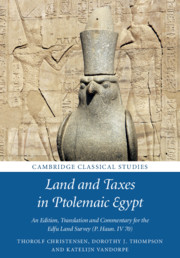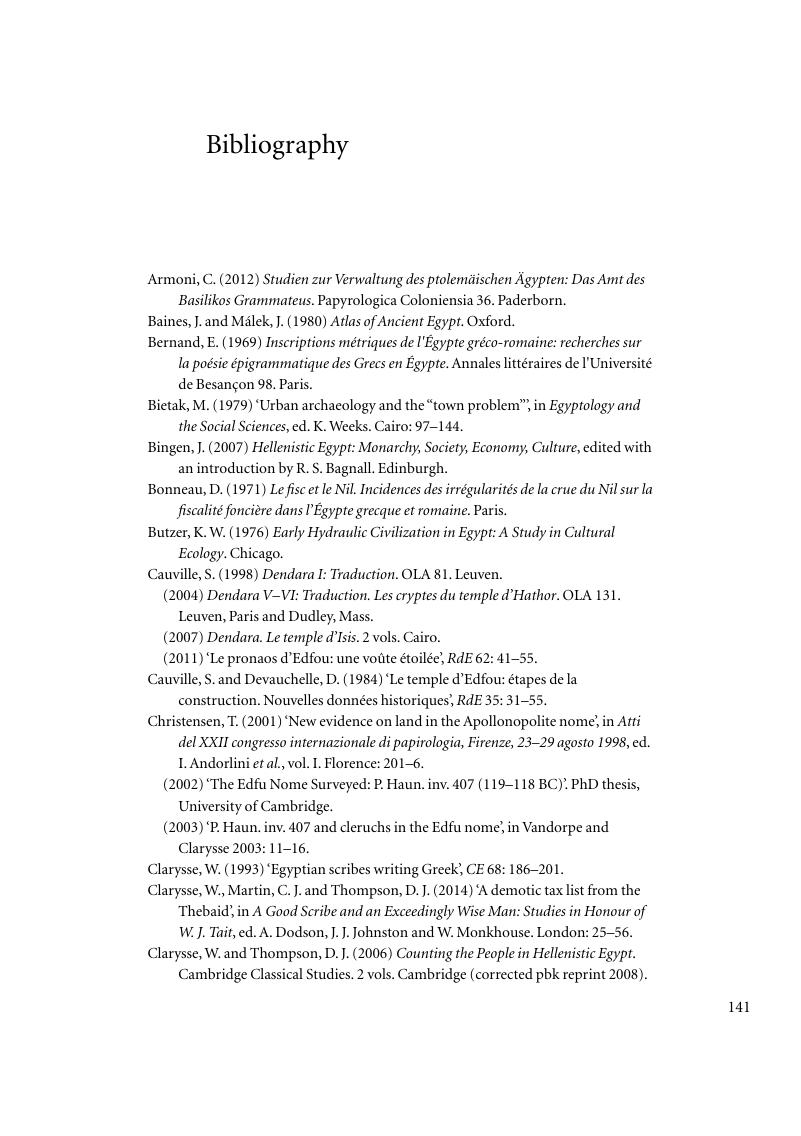 Land and Taxes in Ptolemaic Egypt
Land and Taxes in Ptolemaic Egypt Bibliography
Published online by Cambridge University Press: 17 October 2017
Summary

- Type
- Chapter
- Information
- Land and Taxes in Ptolemaic EgyptAn Edition, Translation and Commentary for the Edfu Land Survey (<I>P. Haun.</I> IV 70), pp. 141 - 146Publisher: Cambridge University PressPrint publication year: 2017
